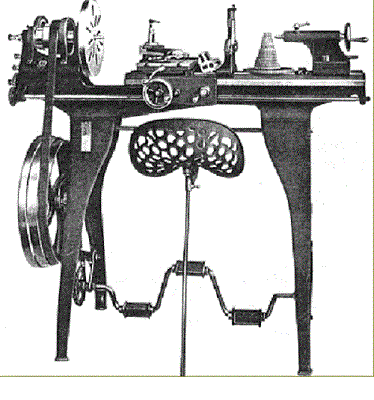rake60
Well-Known Member
- Joined
- Jul 8, 2007
- Messages
- 4,756
- Reaction score
- 124
You have to love the new generation of machinists.
Just listen to them!
"This machine is over 5 years old!
It tapers .002" in a foot and I have to compensate for that in every program I write.
This is BULL$#!T!!!"
OK son, we have a machine that has been proven to do far better than that.

You just lazy on back in that comfortable commanders seat.
Surface speed is foot control and the feed rate is controlled by your left hand.
If it happens to taper, your right hand may need to come into play.
Just think of the wear and tear that will be saved on your fingertips and the keyboard.
AND, if the power goes out, you won't lose your place.
-----------------------------------------------------------------------------------
I had the opportunity to try a one of those old foot powered lathes once.
It was fun to try, ONCE!
It takes some serious pedaling to get it from a dead stop up to speed.
My legs were hurting after 3 minutes, the finish was terrible and the size wasn't even close.
I can't even imagine doing that every day.
Rick
Just listen to them!
"This machine is over 5 years old!
It tapers .002" in a foot and I have to compensate for that in every program I write.
This is BULL$#!T!!!"
OK son, we have a machine that has been proven to do far better than that.

You just lazy on back in that comfortable commanders seat.
Surface speed is foot control and the feed rate is controlled by your left hand.
If it happens to taper, your right hand may need to come into play.
Just think of the wear and tear that will be saved on your fingertips and the keyboard.
AND, if the power goes out, you won't lose your place.
-----------------------------------------------------------------------------------
I had the opportunity to try a one of those old foot powered lathes once.
It was fun to try, ONCE!
It takes some serious pedaling to get it from a dead stop up to speed.
My legs were hurting after 3 minutes, the finish was terrible and the size wasn't even close.
I can't even imagine doing that every day.
Rick








